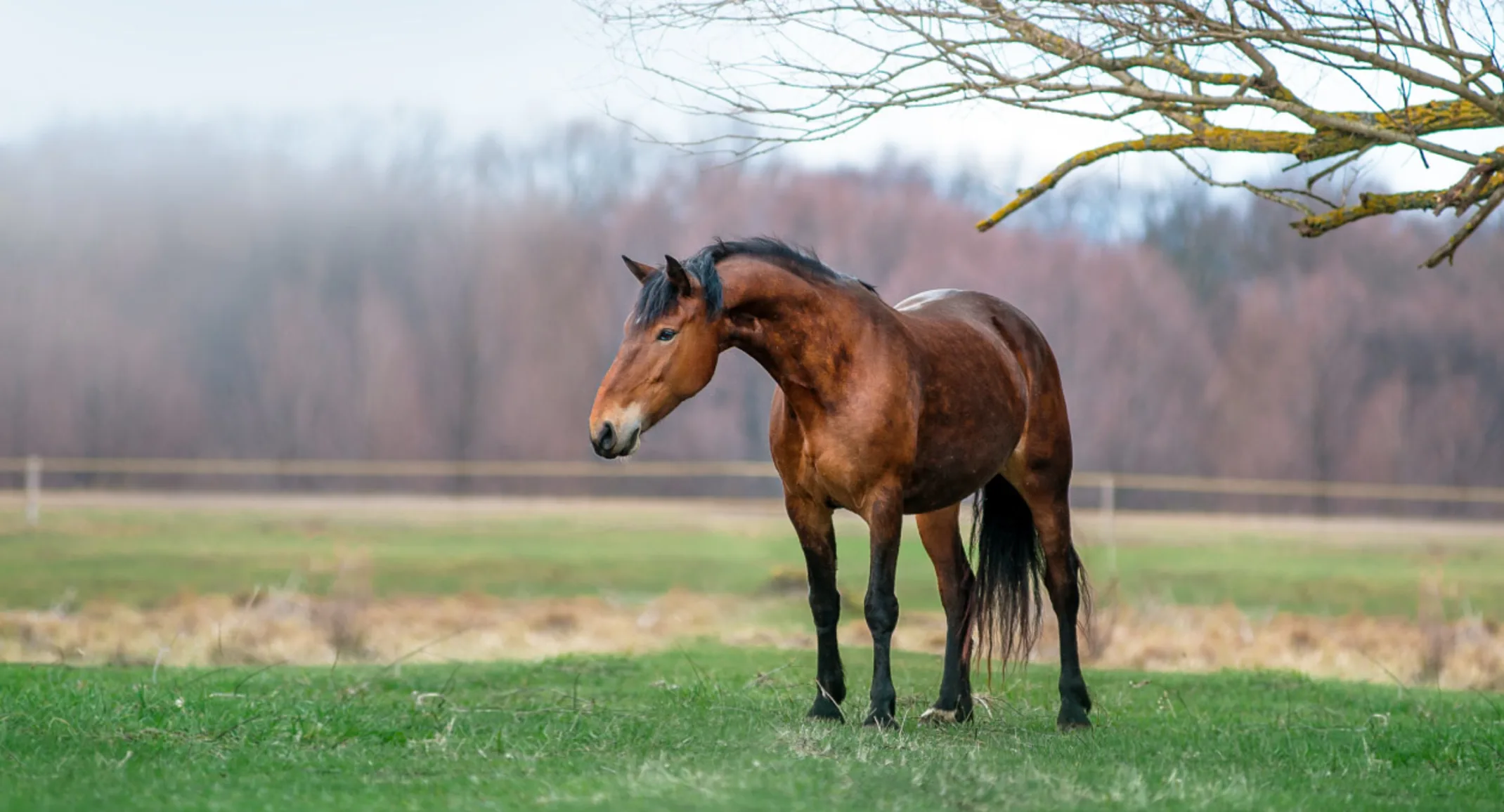Lameness
General

You’ve just come home from work and headed out to the barn to feed your horses when you notice that one of them is standing in the field away from the others resting a leg. When it tries to walk, it becomes apparent that it is extremely lame. At this point, a million thoughts are probably running through your head. Although panicking may seem like a valid idea at this point, calm assessment of the situation is your best course of action. What you do now will help your horse and make your veterinarian’s job easier when the cause of the lameness is being investigated.
First, go out to your horse and carefully examine the affected leg. Run your hands all over the leg looking for bumps, swellings, cuts, or any other wounds. Feel very carefully for any area that causes the horse discomfort when you palpate it. Make a note of it so that you can tell the veterinarian where the painful area is. Check the bottom of its foot to make sure that it doesn’t have something stuck in its foot or hasn’t “sprung” a shoe. If the horse has an obvious fracture (usually apparent because the leg is bending in an unnatural place or at an unnatural angle) or has a foreign body penetrating the sole of its foot, do not move it and call your veterinarian immediately.
If no fracture is obvious and there is nothing penetrating the sole of its foot (nail, piece of glass or metal, etc.), carefully move the horse into the barn so that you may continue your examination. Gently feel behind the fetlock for the digital pulse of the arteries leading to the foot. Once you’ve felt the pulse in the affected leg, compare it to the other three legs. If the pulse in the lame leg is elevated or “pounding,” the foot is most likely the source of the lameness. A sole bruise or an abscess may be to blame. Your veterinarian will be happy to show you how to feel for a digital pulse when they are out on a visit if you’re having trouble finding it.
Now that the horse is in a well-lighted area, re-examine the affected leg to make sure that you didn’t miss any small wounds or areas of swelling. If a wound is located, carefully and gently clean it out with cool running water. Do not scrub the wound vigorously as this may drive debris and dirt further into it. If any bone, tendon, or joint space is seen, this is an emergency. Call your veterinarian immediately. Try to determine how old the wound is, if possible. Most wounds older than several hours cannot be successfully sutured, but your veterinarian may still need to treat and bandage it. Make note of any fluid that may be seeping out of a wound. Yellowish-clear, stringy fluid can indicate that a joint or tendon sheath has been penetrated. These wounds are severe and life-threatening and need to be seen by a veterinarian immediately.
If a swelling but no wound is noted, it can give a clue to the cause of the lameness as well. Determine, if possible, whether the swelling involves a joint, a tendon, or the whole leg. Is the swelling soft or hard? Does it cause the horse pain when you push on it? The answers to these questions will help your veterinarian to determine the cause of the lameness. Cold-hosing the swollen area helps reduce the level of swelling and pain associated with it.
Now that you’ve gathered all possible information about the horse and its lameness, call your veterinarian. Provide the veterinarian with a detailed account of your examination. This will help your veterinarian to determine his next course of action to provide your horse with optimal care.
Michelle Egli, DVM
Delmarva Equine Clinic
